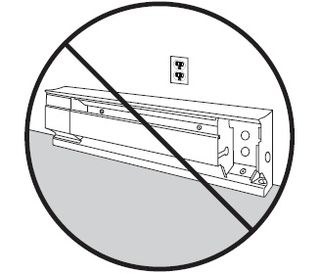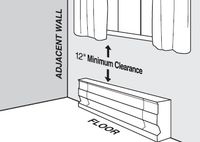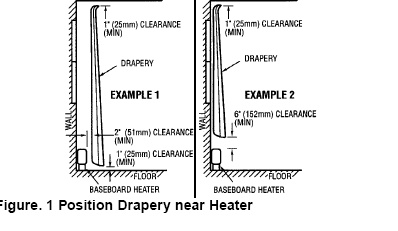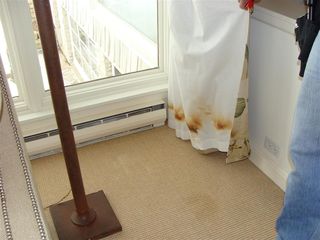When I inspect a home in Minneapolis or Saint Paul that has electric baseboard heat, it’s usually a dead giveaway that someone did some remodeling, or someone flipped the house. In fact, the only houses that I run across in the Twin Cities metro area with all electric baseboard heaters are houses that have been ‘flipped’. Why? I’ll get there.
The times when electric baseboard heaters make the most sense to install are when someone wants to add heat to a room that won’t be used frequently, and they don’t need air conditioning. One common place for Minneapolis and Saint Paul houses would be basement bedrooms that get added as guest bedrooms. Another would be additions that just don’t stay as warm as they should. I added a couple baseboard heaters to a sun room at my own house that doesn’t get very good air flow from the furnace, and I turn the heaters on when the temperature drops below zero outside.
The nice thing about electric baseboard heaters is that they’re easy to install, they don’t cost much, and there isn’t a lot that can go wrong with them. The only failure I’ve found during home inspections is that the thermostats have gone bad, and this isn’t a difficult fix. Most of the problems that I write up during home inspections deal with improper installations. I’ve listed the two most common offenders below.
Outlets Installed Above The Heater All manufacturers of electric baseboard heaters prohibit the installation of electrical outlets above the heaters. Electric baseboard heaters work by turning a heating element on and off; it’s either hot or it’s not, nothing in-between. Because they get so hot, an electric wire draped in front of a baseboard heater could potential melt or start a fire.
Improper Clearances Electric baseboard heaters require certain clearances above and in front of the units to anything combustible, such as drapes. Again, the reason for this is to prevent a potential fire. The clearance requirements vary – just check out the two diagrams below from two different manufacturers. One says twelve inches, the other says six.
These clearance requirements shouldn’t be taken lightly. The photo below came from a recent inspection where the drapes looked like they were about to burst in to flames.
So why are baseboard heaters a favorite of the fix-n-flipper? They’re cheap and easy to install. On the downside, electric baseboard heaters cost far more to operate than a gas fired furnace… but why would the person flipping the house care? They won’t be paying the heating bills. For homes in rural areas where power companies offer off-peak discount rates for electricity, electric baseboard heaters might make sense as the primary source of heat, but not here in the heart of the Twin Cities.
Reuben Saltzman, Structure Tech Home Inspections – Email – Home Inspector Twin Cities




